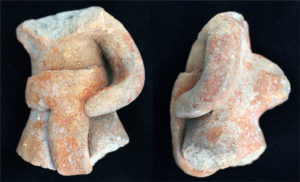
Science Advances—Archaeologists have excavated a 3400-year-old ballcourt in the mountains of Oaxaca, Mexico. The discovery challenges current assumptions about the origin and evolution of the ballgame that held ritual and political importance across Mesoamerica, a pre-Columbian cultural region encompassing Guatemala, Belize, most of Mexico, and parts of Honduras and El Salvador. Researchers have found more than 2300 probable ballcourts, and to the region’s best-known civilizations, the Maya and the Aztec, the game symbolized the regeneration of life and the maintenance of cosmic order. Because chemical analysis of several Aztec balls showed that their rubber came from Castilla elastica, a tree species associated with the plains of southern Mesoamerica, archaeologists have favored the lowlands as the place of origin and primary evolution of the ballgame. Additionally, the oldest known ballcourt, dated to 1650 B.C., is at Paso de la Amada in the coastal lowlands of southern Chiapas, Mexico. At the site of Etlatongo in Oaxaca, Mexico, however, Jeffrey Blomster and Victor Chavez discovered two ballcourts, the older of which dates to 1374 B.C., pushing back the appearance of such structures in the Mesoamerican highlands by approximately 800 years. Based on this finding, Blomster and Chavez argue that both lowland and highland societies contributed to the evolution of the Mesoamerican ballgame. Because nearly a millennium separates the Paso de la Amada and Etlatongo sites from the next ballcourts documented in their respective regions, future research could provide context by uncovering ballcourts at more highland and lowland sites.
___________________________
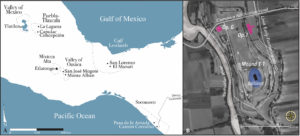
Location of Etlatongo in Mesoamerica and the setting of its ballcourt. (A) Map showing location of Etlatongo in the Mixteca Alta and other referenced sites in Mesoamerica. (B) Aerial view of the ballcourt on Mound 1-1 (colored blue) in relation to domestic space excavated in Operations G & I (purple) to the north. Blomster and Salazar Chávez, Sci. Adv. 2020; 6 : eaay6964
___________________________
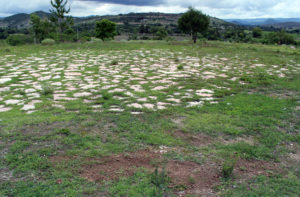
The surface of Mound 1-1 at Etlatongo before excavations began in 2015. Deep below the surface, the project found the ballcourts. Note the old threshing floor on the surface, no longer in use, from the time when these lands belonged to an hacienda. Formative Etlatongo Project
___________________________
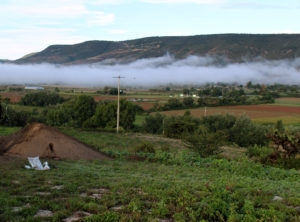
Excavations beginning on Etlatongo Mound 1-1 in the early morning. A small pile of dirt from the excavations has already accumulated on the southern portion of the mound. The modern town of San Mateo Etlatongo is at the foot of the hill in the background of the photo, obscured by the low hanging cloud. Formative Etlatongo Project
___________________________
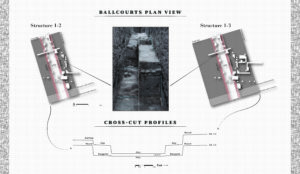
Etlatongo’s ballcourts, Structure 1-2 and Structure 1-3, reconstructed plan views and related cross-sections, with separate scales, based on the excavations. Photograph shows architectural details of both ballcourts; the white rectangles over the plan views show excavation locations. Formative Etlatongo Project
___________________________
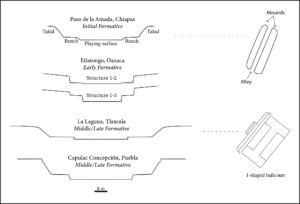
Early ballcourts in Mesoamerica. Comparison of early ballcourt cross-sections (to scale), with earliest on top, with plan views (not to scale) from Paso de la Amada (Chiapas) and La Laguna (Tlaxcala). Blomster and Salazar Chávez, Sci. Adv. 2020; 6 : eaay6964
___________________________

Etlatongo ballplayer figurine. One of numerous ceramic ballplayers from the termination event, front view shows a thick belt or yoke with a loincloth project from it, while the profile view illustrates broken tripod support at bottom, which allowed the figurine to stand, and whistle chamber above it. Blomster and Salazar Chávez, Sci. Adv. 2020; 6 : eaay6964
___________________________
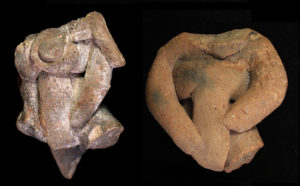
Additional ceramic ballplayer figurines found above the ballcourt. Both wear thick belts or yokes with a loincloth; the figure on the left also has an additional costume element, a collar or pectoral, over the chest. Formative Etlatongo Project
___________________________
Article Source: Science Advances news release
___________________________
Advertisement





